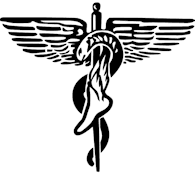Contact Us:
25043 Lorain Road
North Olmsted, Ohio 44070
Phone: (440) 777-5358
SMB Medical Billing: 866-514-0380
Email: ly2drmusser@gmail.com
Fax: (440) 777-5922
*Please call us at
(440) 777-5358 for matters needing attention within
24 hours.
Office Hours:
Monday: 10:00am-6:00pm
Tuesday (first Tuesday of month only): 9am-2pm
Wednesday: 7:30am-2:00pm*
Thursday: 9:00am-4:30pm
Friday: 8:30am-4:30pm
Stephen Musser, D.P.M.
Family Podiatric Care
Serving North Olmsted and the greater Cleveland area for over 30 years.
Patient Services
Below is just partial list of the foot conditions that Dr. Musser treats.
Diabetic Foot Care:
Patient with diabetes is on the rise in the United States. It is important for patients with diabetes to be seen at least once a year for a diabetic foot exam. Diabetes can affect the circulation(blood flow) in the feet and nerve sensation(feeling). Besides foot care for diabetes, Dr. Musser can provide shoe gear for patients that are at a risk for possible complications.
Heel Pain:
Heel pain in most patients is usually caused by a bone spur that has grown on the heel bone as a result of a patients unsupported shoe gear, weight gain, activity level, or foot biomechanics. Fortunately, in the majority of cases, conservatory treatment modalities such as foot orthotics, strapping's/tapping, medications, physical therapy help resolve the symptoms.
Ankle Injuries:
A severe twist or "my foot gave out" injury can result in a sprain, strain or tear of an ankle joint ligament. Immediate and proper treatment should be sought right away. In severe instances, a fracture may result from the injury requiring immobilization or surgical intervention.
Injury and Trauma to the Feet:
Whether performing daily activities or participating in a sporting event, injury to the feet is a common occurrence. Injuries such as bone contusions (bruise of the bone), fractures, dislocations of a joint, tendon or ligament injuries should be addressed and treated in a timely manner.
Corns and Calluses:
When there are boney prominences or excess pressure areas on the foot, a corn/callous may develop due to the excess pressure or rubbing that is occurring as the patient is walking or standing. Shaving of the excess thick skin(which is usually a painless procedure) along with some type of pad or cushion, and possible shoe gear changes will help alleviate the patients symptoms.
Ingrown Nails:
When a nail starts to 'grow in' or press into either or both sides of a toe, an ingrown toe nail can occur which could lead to an infection. In most cases a local anesthetic is administered and the impinging part of the nails is removed. An oral antibiotic may be recommended afterward if there is an infection present.
Fungus Nails:
A nail that has a discoloration and/or thickening appearance may have a fungal infection. This is a common condition that is that is seen often in podiatric offices. Treatments can include topical or internal medication regiments along debridement of the involved nail(s).
Bunions and Hammertoes:
Both bunions(a bump associated by the big toe) and hammer toes(a toe that is bent over) are orthopedic deformities that can lead to foot pain and discomfort. These conditions have a hereditary predilection; however, poor shoe gear can augment the problem. There are both conservative and surgical treatment options available.
Warts:
Warts or verrucas are a common dermatological disorder that is caused by a virus. Although common in children, adults can get them as well. There are many treatment options available to treat warts such as topical or internal medications, liquid nitrogen, and surgical removal.


